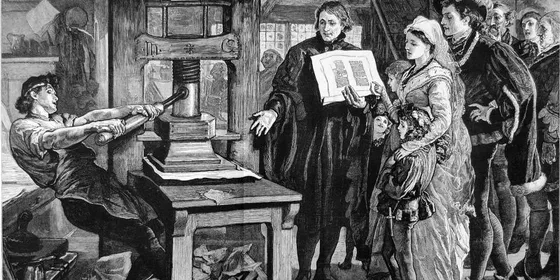
The history of printing in Spain spans centuries, showcasing innovation, cultural transformation, and economic shifts. This journey provides insights into the industry’s past and illuminates its future. Explore significant milestones, illustrating how each era shaped modern printing.
The Dawn of Printing in Spain
The story of printing in Spain starts in the 15th century with the arrival of the first printing presses, marking the beginning of the Spanish Renaissance. Johannes Gutenberg’s introduction of movable type revolutionized book production in Europe, and Spain quickly adopted this technology. In 1472, Valencia printed the first known book, signaling the beginning of printed media in Spain. This period saw the production of religious and scholarly texts, crucial for disseminating Renaissance humanistic ideals throughout the Iberian Peninsula.
The Siglo de Oro – Spain’s Golden Age
During the Golden Age, or the Spanish Golden Age in the 16th and 17th centuries, printing advanced significantly in quality and quantity. Eminent writers such as Miguel de Cervantes and Lope de Vega produced literature prolifically during this era. Printers during this period improved techniques, especially in typesetting and woodcut illustrations, enhancing the aesthetic appeal and readability of books. The spread of literature contributed to a vibrant cultural scene, with printed works becoming more accessible to the burgeoning middle class.
Industrial Revolution and Technological Advancements
The 18th and 19th centuries brought the Industrial Revolution, which introduced steam-powered printing presses. The new machines boosted printing speed and efficiency, slashing book production costs. This met rising demand for literature and newspapers. Additionally, lithography emerged, enabling economical image reproduction, expanding print possibilities.

The 20th Century – Offset Printing and the Digital Age
The 20th century was a period of immense technological advancements in the printing industry. The development of offset printing in the early 1900s revolutionized the industry by facilitating high-quality mass production. This method became the standard for creating books, newspapers, magazines, and later, color prints, due to its efficiency and cost-effectiveness.
As the century progressed, Spain saw significant political and social changes that impacted the printing industry. The post-war era and the transition to democracy opened up new opportunities for media and publishing, reflecting the country’s growing appetite for diverse forms of printed materials.
The latter part of the 20th century and the early 21st century heralded the arrival of digital printing. This new technology caused a major shift in how print items were produced, enabling shorter runs, customization, and on-demand printing. Digital printing technology in Spain not only facilitated the growth of small and medium-sized printing businesses but also supported the burgeoning advertising and marketing sectors by providing them with more flexible and faster printing solutions.
Current Trends and Future Directions of Printing in Spain

Today, the Spanish printing industry continues to evolve with the integration of digital technologies. The rise of e-commerce, personalized printing, and environmentally sustainable printing practices are shaping the future of printing in Spain. Printers are increasingly adopting green technologies, using recycled materials, and reducing waste to align with global sustainability goals.
The industry is also experiencing a renaissance in artisanal and boutique printing shops, which specialize in custom prints and high-quality artisanal books. These establishments cater to niche markets that value craftsmanship and uniqueness over mass-produced items.
The evolution of printing in Spain reflects a journey of adaptation and innovation. From the early days of the Renaissance to the digital age, each phase of development has contributed to the rich tapestry of Spanish printing. Today, as we look towards a future where digital and traditional printing coexist and complement each other, Spain remains at the forefront of exploring new possibilities in printing, continuing its long-standing tradition of excellence in this craft.
This journey through the history of printing not only highlights Spain’s role in the global printing industry but also showcases the adaptability and resilience of printers in embracing new technologies while preserving the artistry of the past. Moving forward, the printing industry in Spain is well-positioned to continue innovating and delivering quality, meeting 21st-century challenges with creativity and expertise.









